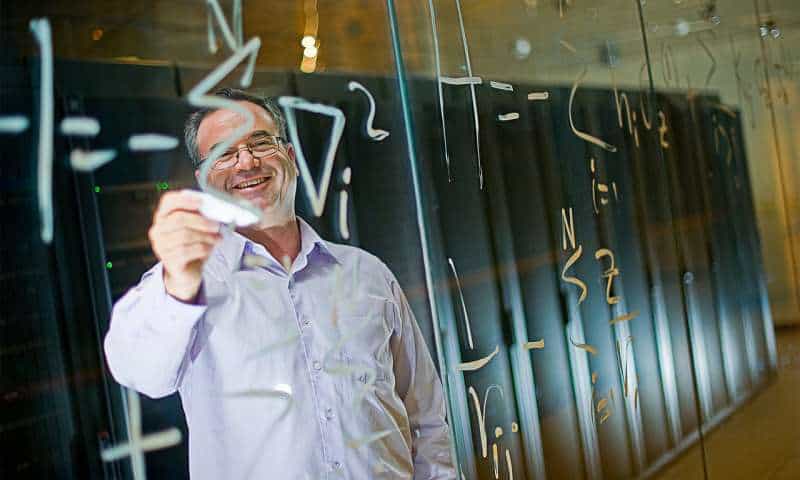
Researchers at the University of California – San Diego are proposing the idea of “information batteries” that store surplus renewable energy as computations to deal with the intermittency of wind and solar energy sources while cutting high costs associated with lithium-ion batteries and pumped hydro.
In a paper published in ACM Energy Informatics Review, the researchers explain that the issue of intermittency is being so poorly managed that in many places renewable energy is dumped during times of excess production, while at other times, power plants burn fossil fuels to meet grid shortfalls.
“The way things are going, in five years, the amount of renewable power wasted in California each year will be equivalent to the amount of power LA uses each year,” Barath Raghavan, co-author of the study, said in a media statement.
In Raghavan’s view, this state of affairs means that information batteries may have a role to play in countries’ greener future.
How they work
The main principle behind these devices is that when renewable energy is available in excess, it is used to speculatively perform computations in large, energy-intensive data centers. These data centers—from Google and Facebook to Hollywood movie rendering—consume 10 to 50 times the energy of a typical commercial building, according to the Office of Energy Efficiency and Renewable Energy. The stored computed results can then be used later when green energy is less plentiful.
“We had the observation that if we can predict possible computations that might occur in the future, we can do those computations now, while there is energy available, and store the results, which now have embodied energy,” Raghavan said.
As an example, the scientist mentioned that every day, YouTube data centers transcode more than 700,000 hours of videos to different resolutions. Many of these computations are predictable and can be performed at a time when there is excess green energy. At this point, the data is stored on servers for later use, when there is less renewable energy available on the grid — essentially moving electricity consumption from one time period to another.
In the scientific sense, Raghavan explained that batteries are stores of potential energy to do useful work, electrical or otherwise. Most storage of energy into batteries converts one type of energy into another kind of potential energy, for instance, electrical into gravitational. In this case, information provides energy in the same way as a battery because electrical energy is turned into what might be called “informational potential energy.”
Flexible system
In addition to taking advantage of task predictability, the system is also flexible: the computations that are completed in advance do not need to match exactly with the computations completed at a later time.
“We support pre-computing many fragments of computation and then later can pick and choose small pieces of computation done before, like puzzle pieces, and assemble them together to quickly compute a totally new computational task,” the researcher said.
For certain types of workloads, the information battery system is expected to offer better efficiency than lithium-ion batteries. The specific efficiency depends on multiple factors, such as the types of computation conducted and the predictability of power. But unlike lithium-ion batteries, storing data is cost-effective in terms of both money and energy.
While the idea itself is relatively simple, its proponents said that the challenge is determining what computation to perform, where and when, and how these computations should be done to efficiently retrieve the results later.
Raghavan and co-author Jennifer Switzer tackle those challenges by providing a design and proof of concept implementation of the zero-carbon system that includes recurrent neural networks for predicting the future availability of renewable energy and upcoming tasks in data centers.
It also includes a cache where functions are stored and a modified compiler to automatically modify code to store and retrieve results. The infrastructure would be geographically distributed, comprising many small, distributed data centers, each located in a region of the country where wind or solar production is known to be high.
“With this system, companies would be using power that would have been dumped, and everybody else benefits because the grid operator doesn’t have to spin up natural gas power in the evening hours to compensate for demand,” Raghavan said.
























